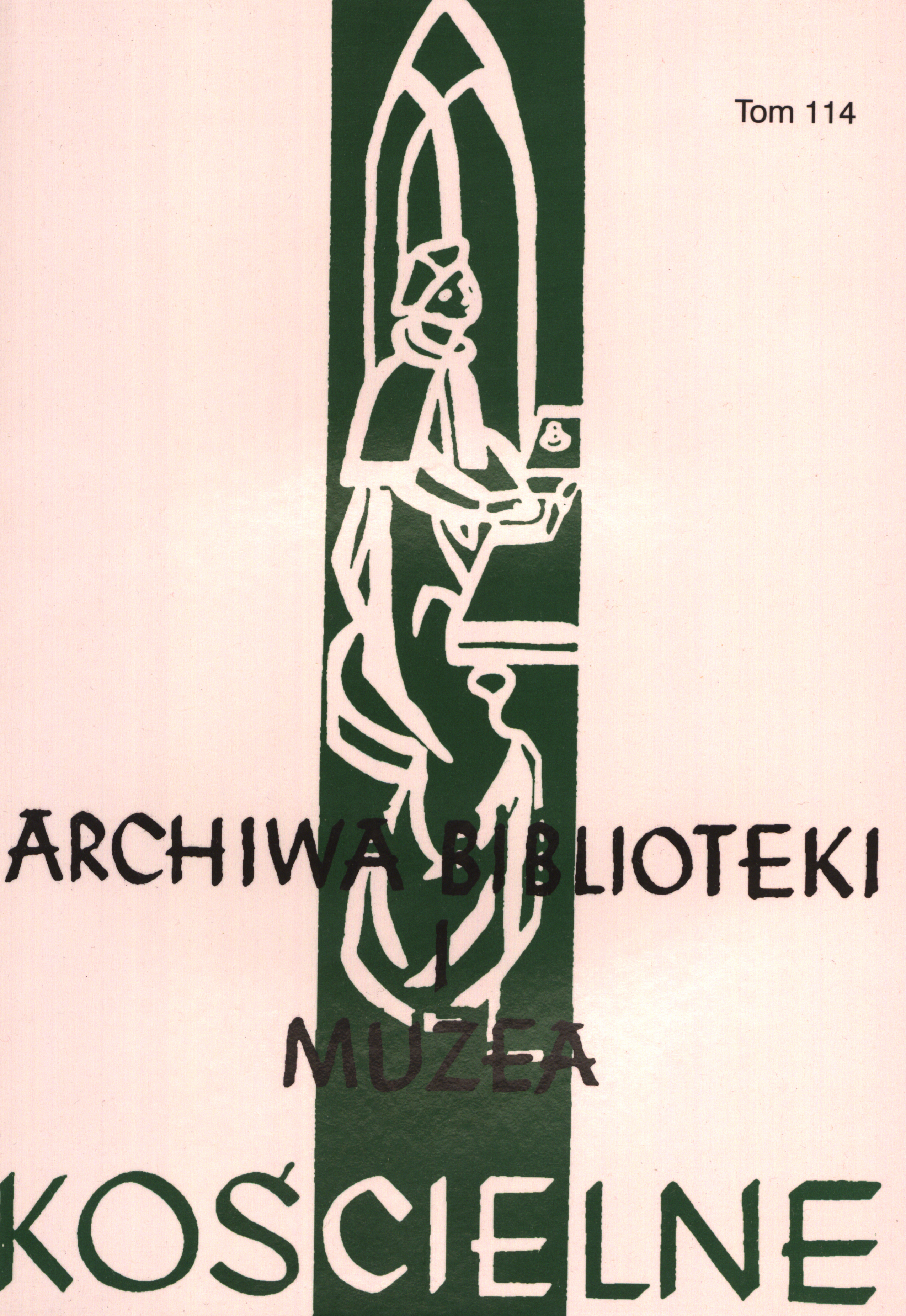Zmiany personalne w organizacji administracji i sądownictwie diecezji kujawsko-kaliskiej (1918-1925)
Personnel Changes in the Organization of Administration and Judiciary of the Kuyavia-Kalisz Diocese (1918-1925)
Author(s): Wladyslaw Piotr WlazlakSubject(s): History, Law, Constitution, Jurisprudence, Theology and Religion
Published by: Katolicki Uniwersytet Lubelski Jana Pawła II - Wydział Teologii
Keywords: Kuyavia-Kalisz Diocese; Włocławek; Włocławek Diocese; curia chancellor; consistory; bishop’s curia; bishop’s court
Summary/Abstract: The issue of personnel changes in the administration and judiciary of the Kuyavia-Kalisz Diocese between 1918 and 1925 was determined by several factors. First of all, there were changes in the church legislation. The new Code of Canon Law, which came into force in 1918, separated the administrative and judicial authorities. It was then that the Bishop of Kuyavia and Kalisz established the Bishop’s Curia in Włocławek to handle administrative matters, and the General Tribunal in Włocławek and the Auxiliary Tribunal in Częstochowa and Kalisz to handle court cases. He established the General Vicariate of Wloclawek, the Offi ciality of Kalisz became the Vicariate, and the Offi ciality of Piotrków was renamed to the Vicariate of Częstochowa. The Vicar General for the whole diocese, which was also an auxiliary bishop, resided in Włocławek. Moreover, in the capital of the diocese, Rev. S. Chodyński, to whom the Vicariate of Włocławek was subordinate, was also a judicial vicar of the Włocławek Tribunal. The adjutant judicial vicar of this Court was Bishop W. S. Owczarek, who then took the offi ce of judicial vicar. Bishop W. P. Krynicki became the Vicar General and the adjutant judicial vicar of the Częstochowa Tribunal, while Rev. J. N. Sobczyński was the Vicar General and the adjutant judicial vicar of the Kalisz Tribunal. It should be noted that the Curia employed a chancellor, consultants, counsellors, secretaries, a treasurer, an archivist, architects, members of various commissions, censors of religious books and catechesis visitors. The clergymen holding the above positions also worked in court, and most of them constituted an elite among the clergy, well educated in foreign universities. The diocesan authority appreciated their commitment, which was refl ected in the ecclesiastical positions they were given. This composition of the staff changed in 1925, when the Kuyavia-Kalisz Diocese lost the Częstochowa Vicariate to a newly established diocese.
Journal: Archiwa, Biblioteki i Muzea Kościelne
- Issue Year: 2020
- Issue No: 114
- Page Range: 455-471
- Page Count: 17
- Language: Polish

